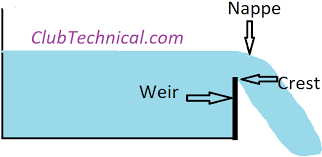Floor Joist – Types, Spacings, Standard Sizes, Advantages
What Is a Floor Joist?
Floor joists
are horizontal structural elements that extend into an open space, usually
between beams, which then transfer loads to vertical structural elements.
These beams,
part of the floor system, carry weight with everything in the room, including
walls, furniture, appliances, and even people.
Types
of Floor Joist
There are 3 main types of floor joists:
I Joist
Solid Lumber
Open Web Truss
Joist
1. I Joist
I-shaped floor joists are robust, lightweight “I” -shaped
wooden components that meet the required performance standards. I-joists
consist of upper and lower flanges that resist bending, are joined to the ribs,
and provide exceptional shear resistance.
The flange material is usually laminated veneer (LVL) or
fine lumber and the strip is made of plywood or OSB. The robust combination of
structural elements results in a versatile, economical frame element that is
easy to install in residential and light commercial projects.
Advantages of I-Joists
I-joists have a longer span than solid lumber joists.
The installation process of I-joists is
easy.
Disadvantages
of I-Joists
I-joists can
not stand fire for a longer time.
I-joists are
expensive when compared to other types of joists.
2. Solid Lumber Joists
Solid Lumber
Joists are closed planks, usually made of old wood. Their range is affected by
various factors such as types, board size, distance, and deviation.
Solid Lumber
Joists in the work area are still common, but wood supplies are depleted, and
using young wood on a beam can damage the wood.
Advantages Of
Solid Lumber Joists
Solid Lumber
Joists can resist fire for a longer duration.
These are less
expensive than the engineered trusses.
Disadvantages of Solid Lumber Joists
• These
are not environmentally friendly.
• The span
distance of Solid Lumber Joists is very limited.
3. Open- Web Truss Joist
These joists offer more advantages than
other types of joists, such as range of depth, longer span, and load-carrying
capacity. Open-Web Floor Trusses Joist has low moisture capacity and shrinks
less.
Advantages of Open web Floor
Truss
• Open-web
trusses joist is best suited for a longer span.
• These
trusses can bear greater concentrated loads to carry bearing walls and roof
loads from above.
Disadvantages
of Open web Floor Truss
Open web truss is costlier than I-Joists.
These joists are difficult to customize accordingly.
Some Common
Advantages and Disadvantages of Floor Joist
Advantages
The floor joist
can bear the live load, Dead load, and Impact load.
The
installation process is more affordable.
These are very
efficient in supporting the structure.
Floor joists
are verticle members and act as beams to transfer the load to the ground.
Disadvantages
Floor joists
have limited options in terms of design and model.
They are
relatively heavy when compared to other trusses.
They require
support from walls, columns, and beams.
These are not
preferred for large areas.
Standard Sizes and Spacing Of
Floor Joists
The standard size of floor joists varies for different
spans, so below, we have provided some standard sizes for the following span.
6, 7 & 8 Feet Span Floor
joist: A standard size of 2×4 floor joist can be used for
a 6,7&8 feet span with a spacing of 16 inches.
10 Feet
Span Floor joist: A standard size of 2×6 floor
joist can be used for a 10 feet span with a spacing of 16 inches.
12 Feet
Span Floor joist: A standard size of 2×6 floor
joist can be used for a 12
feet span with a spacing of 12 inches.
15 Feet
Span Floor joist: A standard size of 2×8 floor
joist can be used for a 15 feet span with a spacing of 16 inches.
16 Feet
Span Floor joist: A standard size of 2×8 floor
joist can be used for a 16 feet span with a spacing of 12 inches.
18 Feet
Span Floor joist: A standard size of 2×10
floor joist can be used for an 18 feet span with a spacing of 16 inches.
20 Feet Span Floor joist: A
standard size of 2×10 floor joist can be used for a 20 feet span with a spacing
of 12 inches.
24 Feet
Span Floor joist: A standard size of 2×12
floor joist can be used for a 24 feet span with a spacing of 16 inches.
25 Feet
Span Floor joist: A standard size of 2×12 floor
joist can be used for a 20 feet span with a spacing of 12 inches.








Comments
Post a Comment